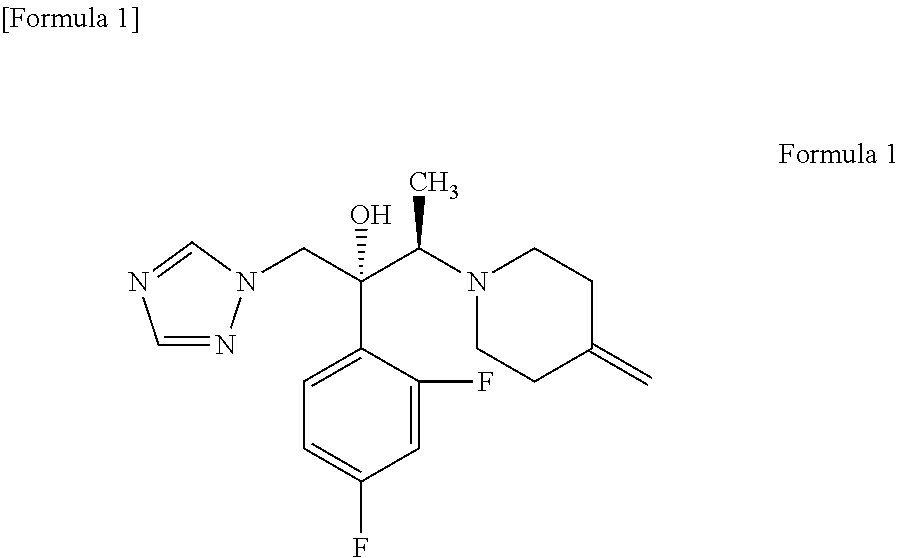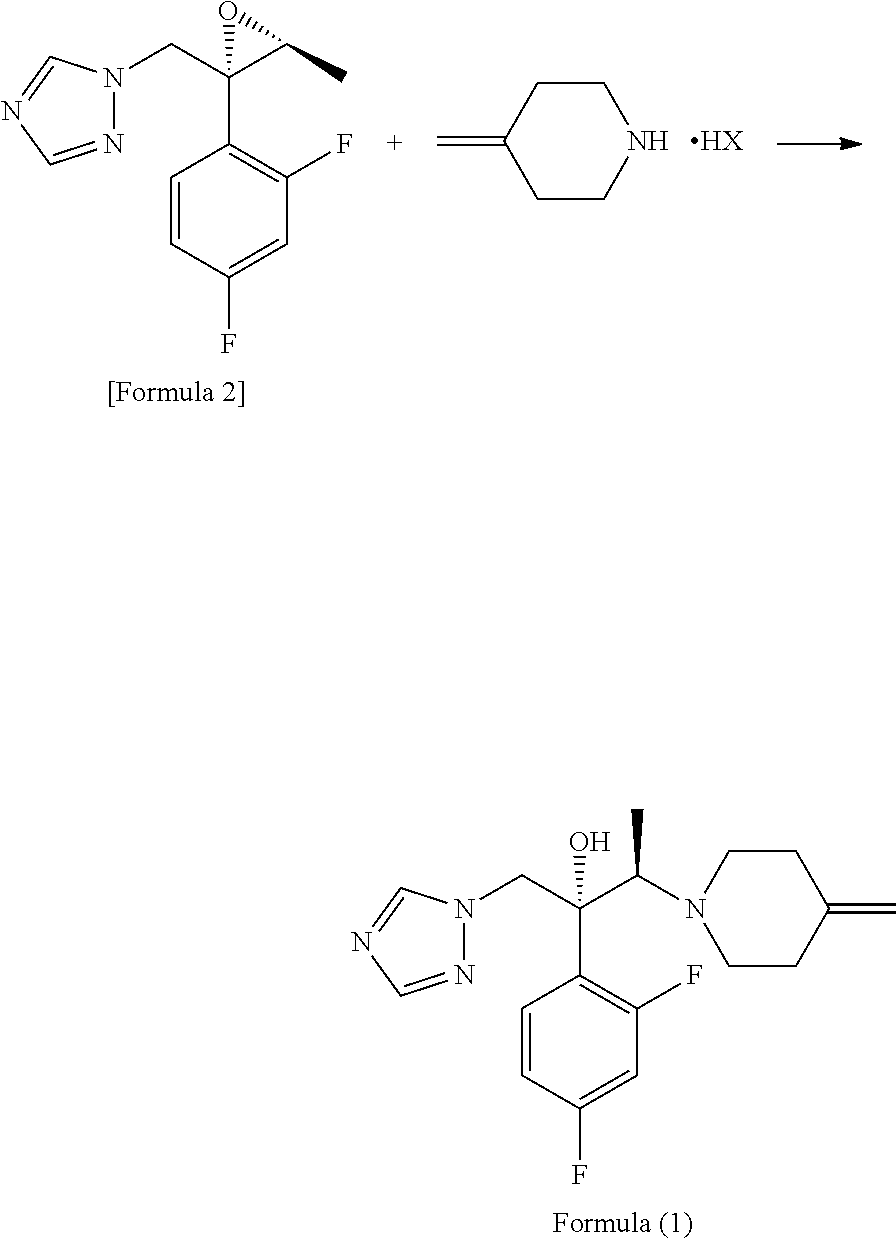Process for producing 1-triazole-2-butanol derivatives
a technology of epoxide and a process, applied in the field of process for producing 1triazole2butanol derivatives, can solve the problems of unsuitable conventional methods, unsuitable industrial use, and inapplicability to amines and epoxides that are solid at ordinary temperature, so as to reduce the generation of by-products, improve the reaction of epoxytriazole and amine, and improve the yield
- Summary
- Abstract
- Description
- Claims
- Application Information
AI Technical Summary
Benefits of technology
Problems solved by technology
Method used
Image
Examples
example 1
Production of (2R,3R)-2-(2,4-difluorophenyl)-3-(4-methylenepiperidin-1-yl)-1-(1H-1,2,4-triazol-1-yl)butan-2-ol (KP-103)
[0053]21.26 g (119.4 mmol) of the 4-methylenepiperidine hydrobromide (4-MP.HBr) obtained in Production 1 and 2.859 g (119.4 mmol) of lithium hydroxide were added to 80 mL of acetonitrile and stirred for a while. Thereafter, 20 g (79.6 mmol) of (2R,3S)-2-(2,4-difluorophenyl)-3-methyl-2-[(1H-1,2,4-triazol-1-yl)methyl]oxirane was added and the mixture was heated under reflux in an oil bath (external temperature: 100° C.) for 14 hours. After the reaction completed, ethanol and distilled water were added to the reaction mixture, whereupon a crystal was precipitated. Thereafter, the crystal was filtered off, washed with 40 mL of an ethanol / water mixture, dried with air at room temperature and further dried under reduced pressure at 40° C. for 12 hours to give a pale yellow crystal of KP-103 in an amount of 24.2 g (yield, 87.3%; purity on HPLC, 95.3%).
[0054]1H-NMR (500 MHz...
example 2
[0059]0.50 g (1.99 mmol) of epoxytriazole, 0.53 g (2.98 mmol) of 4-methylenepiperidine hydrobromide (4-MP.HBr) and 0.07 g (2.96 mmol) of lithium hydroxide were added to 2 mL of acetonitrile and heated under reflux in an oil bath (external temperature, 100° C.) for 14 hours. After distilling off the solvent from the reaction mixture under reduced pressure, water and ethyl acetate were added to the residue and an organic layer was separated. The organic layer was concentrated under reduced pressure and purified by silica gel column chromatography with a hexane / ethyl acetate (1:1) solvent to give KP-103 in an amount of 0.59 g (yield, 86%).
example 3
[0060]Reaction was performed by the same method as in Example 2, except that lithium hydroxide was replaced by 0.22 g (2.97 mmol) of calcium hydroxide, giving KP-103 in an amount of 0.57 g (yield, 82%).
PUM
 Login to View More
Login to View More Abstract
Description
Claims
Application Information
 Login to View More
Login to View More - R&D
- Intellectual Property
- Life Sciences
- Materials
- Tech Scout
- Unparalleled Data Quality
- Higher Quality Content
- 60% Fewer Hallucinations
Browse by: Latest US Patents, China's latest patents, Technical Efficacy Thesaurus, Application Domain, Technology Topic, Popular Technical Reports.
© 2025 PatSnap. All rights reserved.Legal|Privacy policy|Modern Slavery Act Transparency Statement|Sitemap|About US| Contact US: help@patsnap.com



